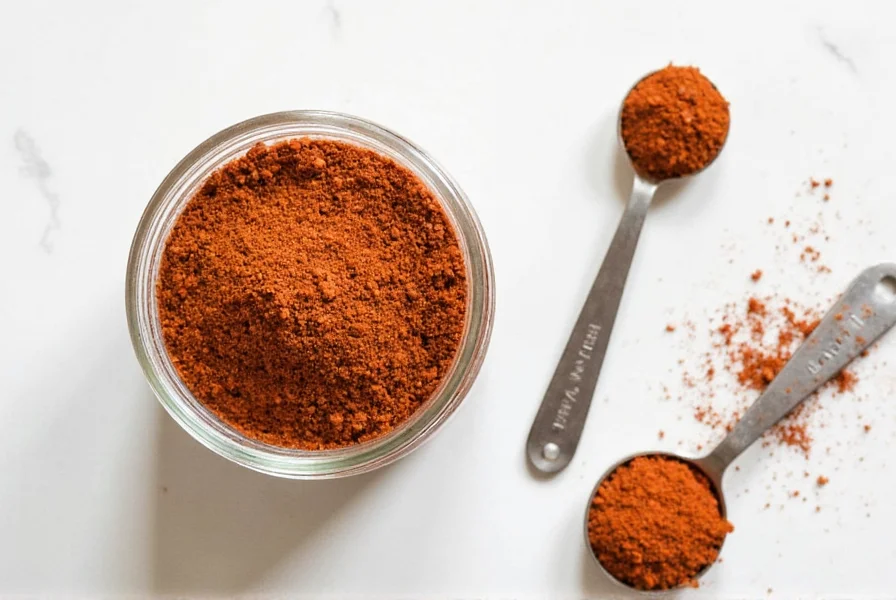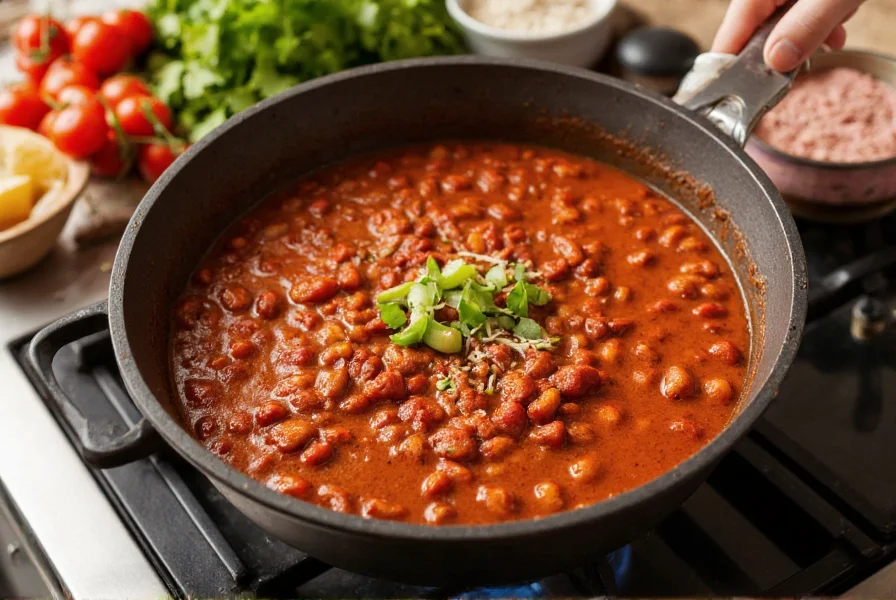Create your own homemade chili seasoning packets with this simple recipe: combine 2 tablespoons chili powder, 1 tablespoon cumin, 1½ teaspoons garlic powder, 1 teaspoon onion powder, 1 teaspoon paprika, ½ teaspoon oregano, ½ teaspoon salt, and ¼ teaspoon black pepper. This DIY chili packet recipe yields the perfect substitute for one store-bought packet and costs pennies to make.
Have you ever reached for a chili seasoning packet only to find your pantry empty? Making your own chili packet recipe from scratch solves this common kitchen dilemma while giving you complete control over ingredients and flavor. Commercial chili seasoning packets often contain preservatives, anti-caking agents, and excessive sodium that you can avoid with this homemade alternative.
Why Make Your Own Chili Packet Recipe
Creating homemade chili seasoning packets offers several advantages over store-bought versions. You'll save approximately 75% compared to purchasing individual packets, eliminate unnecessary additives, and customize the heat level to your preference. This DIY chili seasoning mix measurements provide consistent results every time you cook, whether you're preparing classic chili, tacos, or hearty stews.
Essential Ingredients and Their Roles
Understanding each component helps you create the perfect chili packet substitute recipe. The foundation is chili powder, which provides the characteristic red color and base flavor. Cumin adds earthiness, while garlic and onion powders contribute savory depth. Paprika brings mild sweetness, oregano adds herbal notes, and salt enhances all flavors. Black pepper provides subtle heat that complements the other spices.
| Ingredient | Amount per Packet | Flavor Contribution |
|---|---|---|
| Chili powder | 2 tablespoons | Base flavor, color |
| Ground cumin | 1 tablespoon | Earthy, warm notes |
| Garlic powder | 1½ teaspoons | Savory depth |
| Onion powder | 1 teaspoon | Sweetness, complexity |
| Paprika | 1 teaspoon | Mild sweetness, color |
| Dried oregano | ½ teaspoon | Herbal notes |
| Salt | ½ teaspoon | Flavor enhancer |
| Black pepper | ¼ teaspoon | Subtle heat |
Basic Homemade Chili Packet Recipe
This precise chili packet recipe makes one standard packet equivalent (about 4 tablespoons total). In a small bowl, whisk together all ingredients until thoroughly combined. For best results, store in an airtight container away from light and heat. This basic recipe serves as your foundation for creating the perfect chili packet substitute recipe for any dish.
Customizing Your Chili Seasoning
One major advantage of this DIY chili seasoning mix measurements approach is customization. For mild seasoning, reduce black pepper to ⅛ teaspoon and omit cayenne. For medium heat, add ¼ teaspoon cayenne pepper. For hot seasoning, include ½ teaspoon cayenne and ¼ teaspoon red pepper flakes. You can also adjust salt levels based on dietary needs or add ½ teaspoon cornstarch if you need to mimic the texture of commercial packets.
Preparing Bulk Chili Packet Recipe
Make your own taco seasoning packets in larger quantities to save time. Simply multiply the basic recipe ingredients by your desired batch size. For 10 packets (enough for several months), combine 20 tablespoons chili powder, 10 tablespoons cumin, 15 teaspoons garlic powder, and corresponding amounts of other ingredients. Store bulk seasoning in a glass jar with an airtight lid in a cool, dark place.

Storage Guidelines for Homemade Packets
Proper storage ensures your chili packet recipe maintains maximum flavor. Individual packets stay fresh for 2-3 weeks in small resealable bags. Bulk batches keep for 3-4 months in airtight containers. For extended shelf life up to 6 months, store in the refrigerator. Always use clean, dry utensils when measuring to prevent moisture contamination that reduces shelf life.
Using Your Homemade Chili Packets
Substitute your homemade chili packet recipe one-for-one in any recipe calling for store-bought packets. For chili recipes, add to 1 pound of ground meat along with 2 cups of tomatoes and 1 cup of broth. When making tacos, use with 1 pound of meat and ½ cup water. For best flavor development, sauté the seasoning with meat for 1-2 minutes before adding liquids. This technique creates a more robust chili packet recipe without preservatives.

Troubleshooting Common Issues
If your seasoning tastes bitter, you've likely used old spices—replace them for better flavor. For weak flavor, increase chili powder by ½ tablespoon. If the mixture clumps, add 1 teaspoon cornstarch per packet. When seasoning tastes too salty, reduce salt by ⅛ teaspoon in your next batch. Remember that homemade versions won't have the exact same texture as commercial packets due to the absence of anti-caking agents, but the superior flavor makes this minor difference worthwhile.
Frequently Asked Questions
How much seasoning equals one commercial chili packet?
One standard commercial chili packet contains approximately 4 tablespoons (¼ cup) of seasoning mix. Our homemade chili packet recipe yields exactly this amount, making it a perfect one-to-one substitute in any recipe.
Can I make a gluten-free chili packet recipe?
Yes, this homemade chili seasoning packet recipe is naturally gluten-free as long as you use pure spices without fillers. Always check your individual spice containers for potential cross-contamination warnings if you have severe gluten sensitivity.
How do I adjust this recipe for dietary restrictions?
For low-sodium diets, reduce or omit the salt and increase oregano by ¼ teaspoon for flavor compensation. For nightshade-sensitive individuals, replace chili powder with 1 tablespoon smoked paprika and 1 tablespoon cumin, though this creates a different flavor profile than traditional chili seasoning.
Does homemade chili seasoning taste different from store-bought?
Yes, but in a positive way. Homemade chili packet recipes have brighter, fresher flavors without the metallic aftertaste sometimes found in commercial packets. The absence of preservatives means the flavor is more pronounced, so you might find you need slightly less than the recipe specifies once you're accustomed to the cleaner taste.










 浙公网安备
33010002000092号
浙公网安备
33010002000092号 浙B2-20120091-4
浙B2-20120091-4